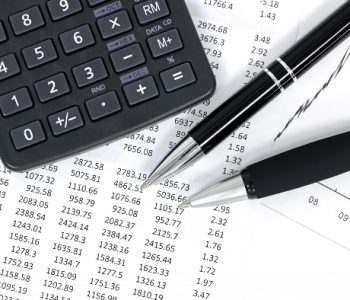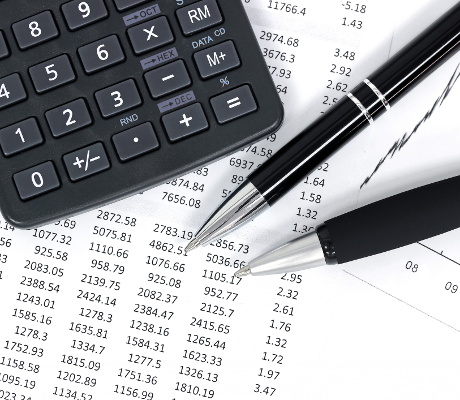What is the Dividend Discount Model?

Stock Valuation Using The Dividend Discount Model (DDM)
The dividend discount model (DDM) is a key valuation method used for dividend-paying stocks. This model is used for determining the value of a stock based on future dividend payments and discounting them to calculate a fair value for a stock. Investors use the dividend discount model to determine if a dividend paying stock is overvalued or undervalued compared to the current price.
When using the DDM to calculate the fair value of a stock, if the result is a price that is higher than the current trading price, then the stock will be labelled as undervalued. If the DDM fair value of a stock is lower than the current market price, then the stock is considered overvalued.
The basis of using this model is that a dollar today is not worth a dollar tomorrow, since inflation must be factored into the cash value.
For instance, let’s say you won the lottery and had the choice of $1.0 million in five years or one payment today of $783,525. Even though there is a big difference between the two numbers, they are actually the same amount. If you went with receiving the money today and earned five percent in interest over the next five years (assuming that is the current interest rate being offered), the result would be $1.0 million (the calculation is shown further below).
This is how the dividend discount model works; it evaluates stocks that pay a dividend and determines their value. The result is calculating a fair value for the stock, which is used to make a comparison with the trading price.
Dividend Discount Model Formula
The formula for the dividend discount model is quite easy to understand and use. Below is the formula:
Value of Stock = Dividend Per Share (DIV1) ÷ (Discount Rate [r] – Dividend Growth Rate [g])year
DIV1 = the estimated value of next year’s dividend
r = the company’s cost of equity capital
g = the constant growth rate of dividends, in perpetuity
When using the formula, the current dividend is taken as “DIV0” and the growth rate applied is what investors think that the payment could grow by.
For instance, if the current dividend is $2.00 per share, this would represent DIV0. If you think the growth rate of the dividend could grow by 10% over the next year, then DIV1 would be $2.20 ($2.00 x 1.10=$2.20). This would also represent the growth rate (g) in the equation for finding the fair share price value.
The company’s cost of capital (r) is the expected rate of return that investors could see from their investment in the company.
Example of The Dividend Discount Model
Below is an example of how to use the dividend discount model on a two year dividend outlook. In this example the assumption is that the dividend will grow by five percent, in each of the next five years. Investors are expecting to receive a 10% return over the next two years, which is reflected in the company’s cost of capital (r).
The current dividend paid by the company is $1.00 per share and this would be DIV0. The calculation has been done for the future dividends of DIV1 and DIV2.
DIV0 = $1.00
DIV1= $1.00 x 1.05= $1.05
DIV2= $1.05 x 1.05 = $1.10
| Year | Dividend Paid (d) | Company’s Cost of Capital (r) | Growth Rate (g) |
| 1 | $1.05 | 10% | 5% |
| 2 | $1.10 | 10% | 5% |
Value of a stock= Dividend Per Share (DIV1) ÷ (Discount Rate [r] – Dividend Growth Rate [g])year
Value of a stock = $1.05 ÷ (10 – .05)1 + $1.10 ÷ (.10 – .05)2
Value of a stock= $21.00 + $1.00
Value of a stock = $22.00
In this case, the stock valuation using the dividend discount model will be compared to the current trading price. If the stock is trading below $22.00, then it would be undervalued according to the formula, or overvalued if above the same amount.
Advantages and Disadvantages of Using the DDM
An advantage of using the dividend discount model is that it is easier to understand and to determine a fair value for a stock. It also allows comparisons of different dividend-paying stocks across different sectors and company sizes. This model focuses solely on the numbers and avoids making a decision based on emotions.
A disadvantage of this model is that it does not factor into business operations, brand loyalty, or customer retention. In addition, it completely ignores the company’s financial statements and does not account for the debt load or the trend of revenue growth.
The formula is very sensitive to the estimated growth rate used by the investor. Prior dividend growth and stock returns could be a thing of the past, since prior returns do not reflect future ones. It also does not factor in the risk associated with that particular investment. Therefore, even though there is a dividend, it may not suit your comfort level.
The dividend discount model cannot be used on companies that do not pay out a dividend; unless you think that the company will do so in the future. However, it is possible that it may never do so.
Two-Stage Gordon Growth Model
A company that pays out a dividend is expected to grow it at different rates, based on its earnings and future investment opportunities. Using the two-stage dividend discount model helps to determine the fair value of a stock.
The two-stage dividend discount model is a model which uses a dividend payment that will see two stages of growth. The first stage of growth will be constant for a certain period of time, while the second stage assumed the dividend will grow at a different rate for the remaining time in the investment.
Two-Stage Gordon Growth Formula
The first part of the formula is the same as the dividend discount model:
Value of Stock= Dividend Per Share (DIV1) ÷ (Discount Rate [r] – Dividend Growth Rate [g])year
The second part of the formula uses the same formula as above, expect the growth rate would change to what the new expected growth would be:
Value of Stock= Dividend Per Share (DIV1) ÷ (Discount Rate [r] – Dividend Growth Rate [g])year + Dividend Per Share (DIV1) ÷ (Discount Rate [r] – New Dividend Growth Rate [g])year
Example of Two-Stage Gordon Growth Model
The assumption is that the dividend will grow at seven percent for the first three years and at three percent thereafter.
The present dividend paid by the company is $2.10, which will be used to determine the future expected dividend payments:
Div0= $2.10
Div1= $2.10 x 1.07= $2.25
Div2= $2.25 x 1.07= $2.41
Div3= $2.41 x 1.07 = $2.58
Div4= $2.58 x 1.03 = $2.66
| Year | Dividend Paid (DIV) | Company’s Cost of Capital (r) | Growth Rate (g) |
| 1 | 2.25 | 10% | 7% |
| 2 | 2.41 | 10% | 7% |
| 3 | 2.58 | 10% | 7% |
| 4 | 2.66 | 10% | 3% |
Value of Stock= Dividend Per Share (DIV1) ÷ (Discount Rate [r] – Dividend Growth Rate [g])year + Dividend Per Share (DIV1) ÷ Discount Rate [r] – New Dividend Growth Rate [g])year
Value of a stock = $2.25 ÷ (.10 – .07)1 + $2.41 ÷ (.10 – .07)2+ $2.58 ÷ (.10 – .07)3 + $2.66 ÷ (.10 – .03)4
Value of a stock= $75.00 + $2.27 + $2.36 + 2.03
Value of a stock = $81.66
In this case, the fair value of this company’s stock would be $81.66; this amount would then be used to determine if the stock is overvalued or undervalued. A trading price lower than $81.66 would mean that the stock is undervalued and vice versa.
Limitations of Gordon Growth Model (GGM)
As noted above, the formula assumes that the dividend will grow at a constant rate for a certain length of time before changing for some reason. However, this assumption could differ greatly from what really happens to the stock and its dividend growth. The historic dividend growth rate is used with the formula to determine the dividend’s future growth rate.
However, note that there are always things which could change the dividend growth outlook. For instance, there could be a change within the industry that leads to a shift in business strategy, leading to further reinvestment into the business. The economy could also impact a lot of a company’s earnings.
How Do You Calculate Terminal Value?
Compared to the other calculations that have been shown in this article, this one comes with a little twist; it looks at how long you are willing to invest into a company. If you are willing to hold the shares for three years, the dividend outlook and share price in three years are both relevant.
The share price is what you will expect to sell the shares at. Below is an example.
Example 1:
DIV0=$2.00
DIV1=$2.00 x 1.03= $2.06
DIV2=$2.06 x 1.03= $2.12
DIV3=$2.12 x 1.03 = $2.18
| Year | Dividend Paid (DIV) | Company’s cost of capital (r) | Growth Rate (g) |
| 1 | $2.06 | 8% | 3% |
| 2 | $2.12 | 8% | 3% |
| 3 | $2.18 | 8% | 3% |
Assume the price of the shares in three years will be valued at $50.00 per share.
Value of Stock = dividend per share (DIV1) ÷ (discount rate [r] – Dividend growth rate (g))year + Share price + DIV2 ÷ discount rate [r] – dividend growth rate [g]) year
Value of stock= $2.06÷(.08-.03) + $2.12÷(.08-.03)2 + ($50.00 + $2.18)÷(.08-.03)3
Value of Stock =$ 41.20 + 1.92 + $45.07
Value of stock = $88.19
Therefore, based on the above data, the fair value for the shares should be $88.19. When using this formula, adjustments to the expected dividend growth rate or the share price in three years may be necessary.
Example 2:
Now, the calculations for the lottery question in the intro will be shown below. The assumption is that the required rate (r) is five percent. The growth rate in this case would be one because you are simply getting your capital back from the investment and plus the interest earned.
In case you forgot, the first option is to receive $1.0 million in five years from your (hypothetical) lottery winnings. The second option is to receive $783,525 today.
I will be using the same formula used for the dividend payment, except it will apply to a lump-sum payment instead:
Value of the lottery winning= Payment ÷ (1 + required rate)year
= $1,000,000 ÷ (1.05)5
= $783,325 (same value if you receive this today)
This would be the same as a terminal payment. And in this case, you know if you choose the first option, you will get $1.0 million in five years. Regardless of the choice you make, the outcome will be the same.
Problems with Terminal Value
No one can predict what the stock price could be trading at in the future. Therefore, when using the terminal value it could be way off the mark compared to the actual price.
The numbers used in this formula to determine the current fair value of the stock could be easily changed, and with them the result.
Final Thoughts About the Dividend Discount Model
The dividend discount model should be factored in with other metrics when researching stocks.
I would recommend creating a range when using the DDM. For instance, use a growth rate which would reflect a best-case scenario, a worst-case one, and an average rate. This way, you can have a price range based on your valuation rather than relying on just one number to determine your investment decision.
The dividend discount model is an easy formula to use and changing the numbers around is quite easy.











